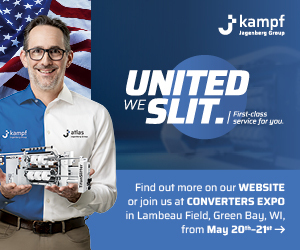What do Kerite, UMASS-Lowell, Malloy, Womer and Glycon Have in Common?
- Published: January 18, 2013, By Tom Bezigian
It was an elegant event, displaying a very nice center for technology at what I and many consider to be the premiere plastics education center in the USA. It was good to see new equipment, old friends, and even to listen to several speeches.
As one enters the building, the first thing seen is the extruder history display (below) assembled by Prof. Robert Malloy, with the help of several people and companies as described below. In fact, I could not have written it better, so what follows is an article by Bill Bregar in the January 10, 2013 issue of PLASTICS NEWS [slight modifications to the text to accomodate additions as necessary].
Jean Vangsness, Lab Manager - Nanomanufacturing Center at UMASS-Lowell, at the display of the history of extrusion screws, featuring eight scale-model screws from Glycon Corp. The exhibit is shown at the UMass Lowell’s new Emerging Technologies and Innovation Center. (Edwin Aquirre photo)
Jean Vangsness, pictured above, gave me a tour of the entire facility after the grand opening. It is truly a state-of-the art facility ready to partner with industry and can accept research grants as necessary.
The Plastics News article follows.
LOWELL, MASS. (Jan. 10, 4:10 p.m. ET) -- Using old line drawings, history books and patents, employees at Glycon Corp. built eight scale-model screws for a display showing the history of extrusion screws, at the University of Massachusetts at Lowell’s new Emerging Technologies and Innovation Center.
Glycon President Jeffrey Kuhman said the project heightened his interest in plastics history. Glycon, in Tecumseh, Michigan, built the eight miniature screws. Bob Malloy, chairman of UMass Lowell’s Plastics Engineering, said the school built the display case and the completed exhibit, housed in the lobby of the new building in Lowell.
“We can’t thank Jeff enough for doing this,” Malloy said.
All eight screws are 2 inches in diameter, and built to the exact scale as the originals, with accurate length-to-diameter ratios, depth of channels and other features. “We made new drawings. Each one is a scale drawing,” Kuhman said.
Screw designer Tim Womer checked the designs and helped with the historical research.
The display includes an explanation of each screw. The first extrusion screws for the rubber extrusion industry, in the late 1800s, were short. When thermoplastics came out in the 1930s, engineers adopted longer versions of the rubber screw, with a higher L:D diameter, to allow the materials to melt.
In the middle of the research, Kuhman came across an exciting historical find. While making a sales call at Kerite Co. in Seymour, Conn., he commented on a photograph of an extruder from 1865, shown in a display in the lobby. “And he said, ‘Would you like to see it?’” Kuhman recalled.
Kerite still had the extruder in storage. Used to make telegraph cable, the extruder was driven by a belts and pulleys powered by a water wheel on the nearby Naugatuck River. Malloy said the barrel was heated by steam.
Kerite has loaned the extruder to UMass Lowell, which plans to display it. Malloy said it will be restored to show the water-power drive apparatus — appropriate, since water powered Lowell’s textile mills.
Over the years, extrusion screws became longer and more complex. The display at UMass Lowell includes the first metering screws, vented screws, barrier screws, and the Maddock Mixer.
Malloy is a history buff. The Emerging Technologies and Innovation Center also is the new home of the Plastics Hall of Fame.
Malloy said he hopes Glycon will be a role model, showing that plastics companies can help document and preserve the history of plastics.
“This is a very artistic display, as well. It’s very aesthetically pleasing, even if you know nothing about extrusion,” he said. “For me, history is extremely important. We learn from the past to see how people developed.”
The first exhibit covers only extrusion screws. Malloy wants to put together a display showing the history of screws for injection molding.










